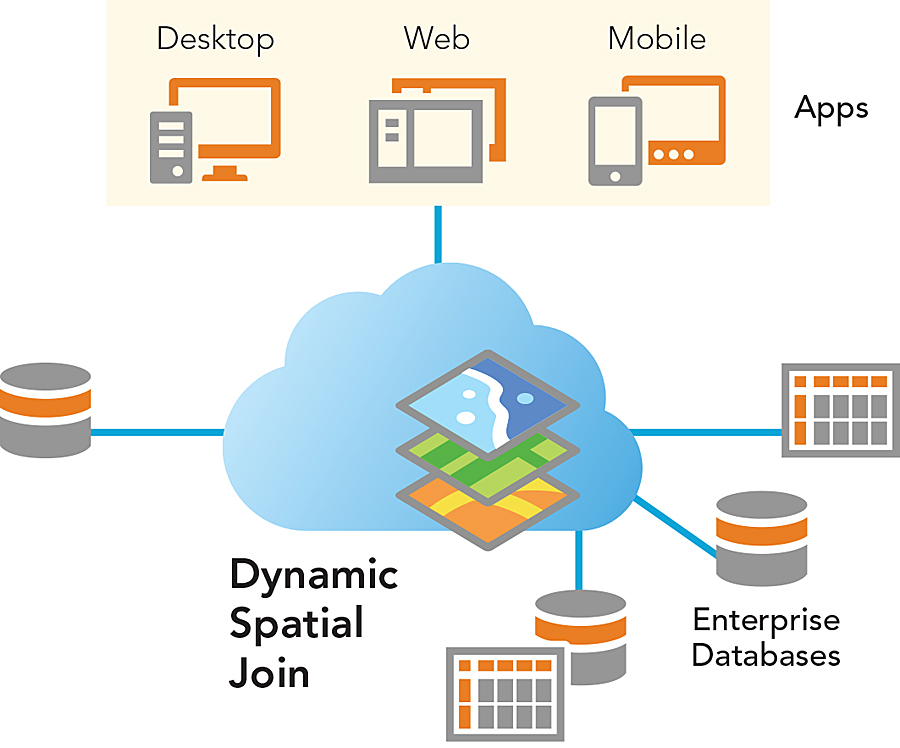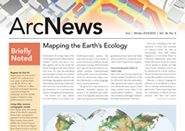A few months ago I was asked by the City of Los Angeles to share a few technology trends about the future of GIS in cities and how these enabling trends would make cities smarter.
Over the past four decades, GIS technology has systematically impacted local government by improving basic record keeping and data management as well as automating a wide variety of geospatially-related workflows including mapping. Most of these improvements have been in departmental systems focused on specific mission areas.
We are now entering a period in which geospatial (and other) data about cities is growing enormously. This data is increasingly being directed to address the growing challenges facing cities today. Managers and policy people are searching for approaches that better leverage this digital data to improve decision making and government management. Finally, there is strong interest in making government data openly available to the public and businesses in the belief that this can stimulate innovation and provide more government transparency. As a result, GIS is being more widely recognized as a powerful platform for local governments to achieve these goals. Its ability to manage, integrate, analyze, and visualize very large and complex data is making it an essential platform for creating the sustainable cities of the future.

GIS systems have traditionally been based on database-centric approaches that generate information products, such as maps, reports, or views, from centralized DBMSs (geodatabases). While there are some exceptions such as Geneva, Switzerland, these GISs have been largely implemented as departmental systems.
Over the last decade, due largely to the emergence of faster computing and networks, the vision of distributed enterprise systems created by integrating departmental systems began emerging. This vision leveraged services-oriented architecture for dynamically combining data from multiple distributed databases. As a result, we have seen the development of applications that can access, join, overlay, and view distributed data as if it was supplied by a single DBMS or geodatabase. This capability has eliminated the need to normalize and physically integrate data into a single centralized system. This distributed, federated architecture has dramatically accelerated with the maturing and acceptance of web standards as a backbone for enterprise architecture.
A New Web GIS Pattern
Today patterns of distributed data mashups (both tabular and map) are increasingly being implemented in cities. This is helping unify and integrate information from many sources across the enterprise and beyond. This new work pattern is facilitated by the web and web services. While not replacing the need for good traditional database design, it creates a much more agile framework for developing and deploying GIS apps. It is actually helping realize the data integration vision of enterprise GIS.
To make this type of dynamic database integration work in a tabular database world requires common keys among and between distributed datasets so that data can be easily integrated. Common to most local government data and services is some form of georeferencing or location. This georeferenced data can be x,y coordinates, an address, a placename, or geographic area such as ZIP Code or administrative area. GIS provides the tools that interrelate this data via spatial joins. For example, GIS can associate a table of data of points (such as crime incidents) with a table of areas (such as police districts). This capability is increasingly being recognized as playing a major role in integrating of all types of data across the enterprise.
The other key building block enabling this new architecture is the exposing of data as services using protocols such as REST. These services are increasingly used to support a whole new world of GIS application development that supports operational workflows, analytics, decision support, and citizen engagement.
More real-time data about cities is becoming available. Massive networks of stationary and mobile devices that measure and track everything that moves or changes are being created. This includes traffic, utility usage, environment, and smart building data, which are exposed as services. Over time crowdsourcing will also be integrated as an information source enabling citizens as well as city employees to report their observations and interpretations. Finally, service-enabling operational data (data maintained in enterprise systems) will mean that data can be easily connected and dynamically integrated.
Serverizing all local government data will transform GIS and make it more easily deployed to make cities smarter. This framework allows GIS professionals to easily mash up data and create apps that traditionally required far more resources. As a result, processes that involve tasking and resource allocation—such as dispatching repair crews, responding to emergencies, and deploying law enforcement—will become more rational and reliable.
Citizen interfaces to government services will increasingly be done using a services platform. The so-called e-gov revolution will be supported using web services that provide access to distributed data sources. A whole new suite of capabilities for performing tabular, statistical, geospatial analytics, and visualizations will be built on these services.
GIS already provides many tools to do this and will increasingly be used to turn local government data into actionable information that cities can use to improve services and the quality of life for their citizens.
The Future City
Future cities will be much smarter. Everything will be measured in real time and in fine detail through the deployment of sophisticated arrays of sensors. GIS will play a major part in integrating mountains of real-time data so it can be understood and acted on. It will improve applications that range from managing environmental quality and the built environment to land-use and transportation planning. The result will be better decisions, more efficiency, and improved communication.
Cities will increasingly make their information available as open geospatial services (maps). These maps will help tell stories about the state of those cities and the policies they have taken. All transactions and changes will be illustrated virtually, resulting in citizens who are both more informed and engaged. They will visit city hall more frequently—virtually instead of physically—and most local government transactions will be done on the web.
The Role of GIS Professionals
GIS professionals will play a major role in creating this future. They will implement GIS-based smart 2D and 3D maps as the new user interface for communicating, integrating, analyzing, and understanding everything about cities. They will geoenable all databases and expose this data as open web maps and web scenes. These map services will be used for creating all sorts of apps available everywhere on any device. They will provide reports, tell stories, and reference locational activities. They will enable a better understanding and provide a rational basis for the analysis of complex situations and support for place-based planning and decision making.
Longer Term
As cities enable their information, people everywhere will be able to openly compare cities. Technically, this is already possible. It is being done by the Urban Observatory, which is an early prototype of what will come. We are also seeing exciting work done by organizations such as The Trust for Public Lands, which is providing new scoring measures that compare cities based on differences in the amount of open space and parks. This type of GIS-based scoring system will evolve into a framework for scoring everything in cities. My vision and hope is that GIS professionals will facilitate this process and provide an integrated, transparent, and comprehensive science-based framework that will help evolve our urban settlements into smarter and more sustainable cities of the future.


